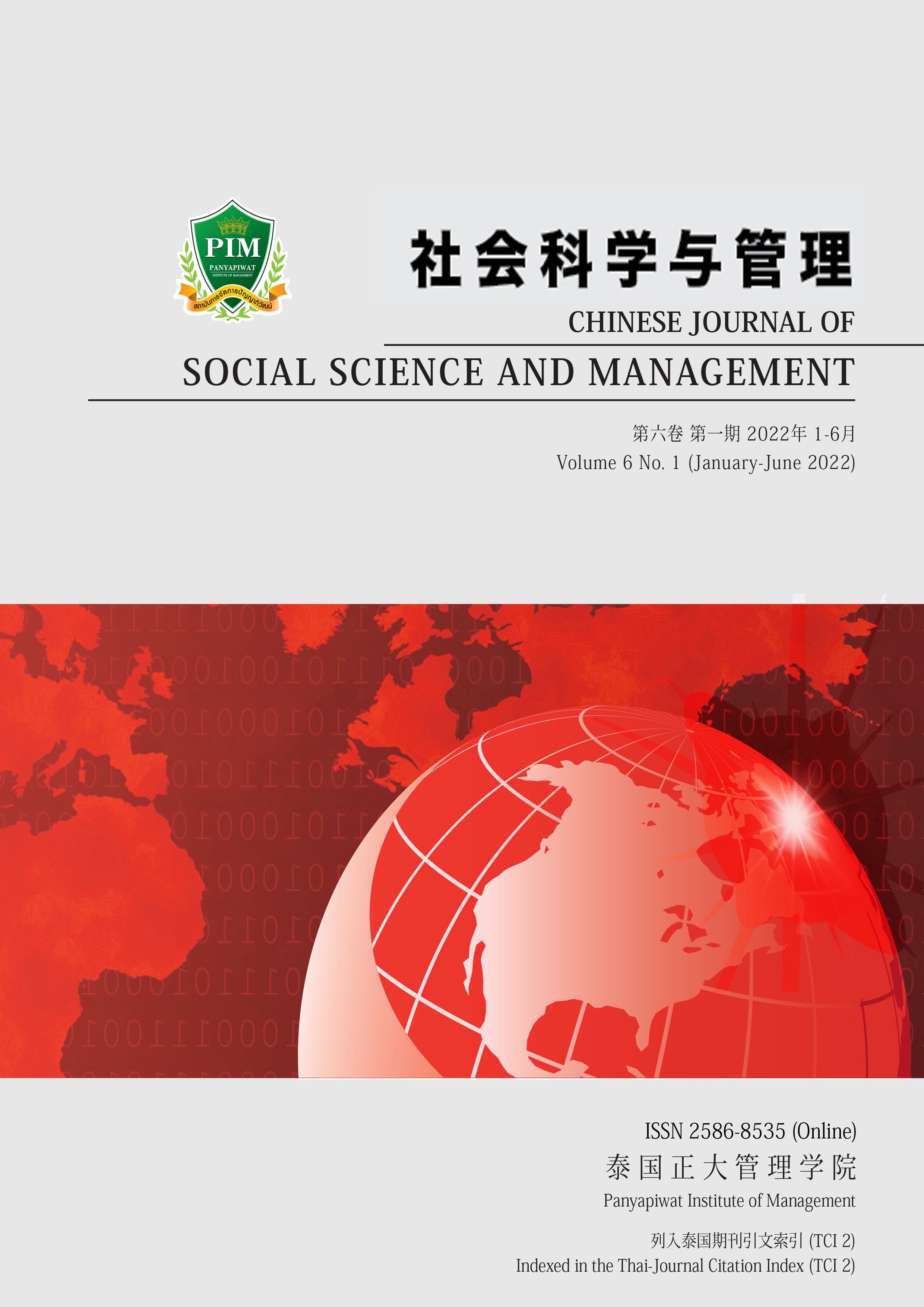THE COMPARATIVE STUDY OF THE SIMILARITY OF VOCABULARY BETWEEN CANTONESE AND THAI
Main Article Content
Abstract
This article aimed to conduct a comparative study of the same and similar words between Cantonese, also known as the “Sam Yup accent” and Thai language. Through a comparative analysis, words were chosen from both languages that had the same meaning and sound. The data used in this study came from a survey of 1,000 Chinese dialect words, which were used to record the pronunciation of four Chinese participants
of Thai Cantonese descent. Then, they were compared with the sounds in the Thai words.
The study showed that from a survey of 1000 words in the dialects as the main object, it was found that Cantonese also known as the “Sam Yup accent” and Thai had five words with the same sound and meaning, and there were 49 words with similar sounds and same meaning. Thus, it could be seen that some words in these two languages were closely related and were not considered to be borrowed words from each other. This study focused on showing the deep connection between Cantonese and Thai, so to provide a relevant
reference for the teaching of Cantonese in Thailand.
Article Details

This work is licensed under a Creative Commons Attribution-NonCommercial-NoDerivatives 4.0 International License.
Chinese Journal of Social Science and Management Editorial Division
The Office of Research and Development, Panyapiwat Institute of Management
85/1 Moo 2, Chaengwattana Rd., Bang Talat, Pakkred, Nonthaburi 11120, Thailand
Tel. 02 855 01048 E-mail: cjssm@pim.ac.th
References
Anumanratchathon, P. (1989). Knowledge of Thai Language. The Fine Arts Department, the Teachers Council of Thailand Trade Organization and the Sethiarkoset. [in Thai]
Carroll, J. B. (1968). Contrastive linguistics and interference theory. In J. E. Alatis (Ed.), 19th Annual Round Table (pp. 113-122). Georgetown University.
Duan, L. S. (2014). The History of Thailand. Shanghai Academy of Social Sciences Press. [in Chinese]
Feng, F. J. (2008). A Thai-Chinese vocabulary correspondence study [Master’s thesis]. Xiamen University. [in Chinese]
Gan, Y. (2011). A study of cognates in Thai, Zhuang and Cantonese [Master’s thesis]. Mahasarakham University. [in Thai]
Gong, B. H. (2003). History of Overseas Chinese in Canton. Guangdong Higher Education Press. [in Chinese]
Kong, G. Y. (2014). A comparative study of Thai and Cantonese phonetics. Journal of Wuzhou University, 24(5), 60-66. [ in Chinese]
Language Resources Protection Research Center. (2015). Language protection project-project introduction. http://www.chinalanguage.cn/gongchengjieshao.html [in Chinese]
Mahatdhanobol, V. (2012). Chinese words in Siam, reflecting Thai-Chinese interactions. Amarinthon Publishing House. [in Thai]
Phisetsakonkit, S. (1946). How useful are Chinese and Thai Dialects in researching the origin of Thai words [Master’s thesis]. Chulalongkorn University. [in Thai]
Todaechavattana, M. (2002). A Study of lexical correspondences between Cantonese and Thai [Master’s thesis]. Chulalongkorn University. [in Thai]
Tonsakulroongruang, Y. (2000). From A Sum to Yum Cha the Legend of Cantonese People in Siam. NaiIn Shop. [in Thai]
Wu, S. Y. (2006). A comparative study of Thai “Keng” and Chinese “Keng22”. Chinese Studies Journal of Kasetsart University, 1(1), 89-100. [in Chinese]
Zhan, B. H. (2004). Summary of Guangdong Cantonese Dialect. Jinan University Press. [in Chinese]
Zhou, D. F. (1985). International phonetic alphabet self-study manual. The Commercial Press. [in Chinese]
Zhu, X. N. (2010). Phonetics. The Commercial Press. [in Chinese]


